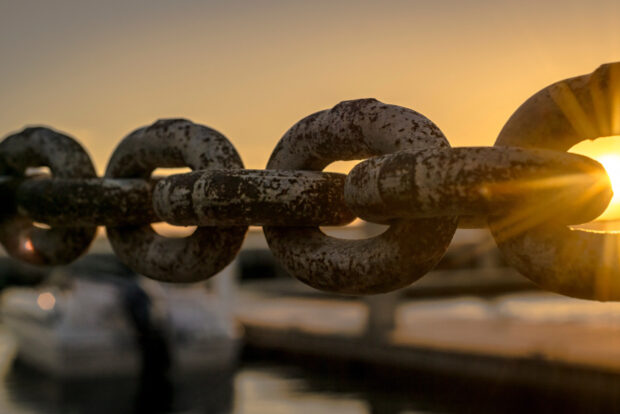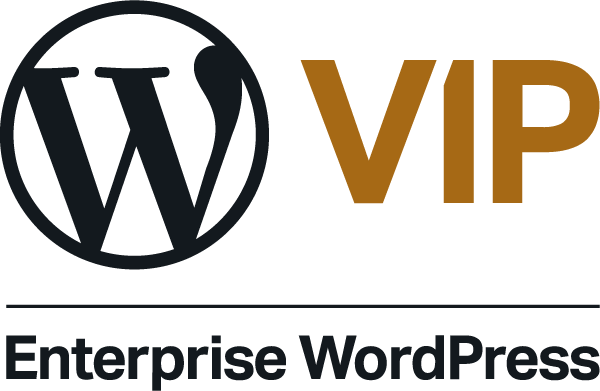Keeping links strong: what governments can do to take the sting out of supply chain risk

Geopolitical and economic headwinds are putting global supply chains at risk, with potentially serious implications for service delivery. In a Dun & Bradstreet webinar, public and private sector experts discussed ways to manage vulnerabilities and build resilience
If you’re reading this on a hand-held device, it’s worth pausing to consider the tens of countries whose resources and expertise went into making it.
The iPhone for example is composed of 50 parts sourced from 53 countries. It is thanks to a network of global supply chains that such modern luxuries are possible, yet even when economic times are good, they come with risk. Governments’ role is often to give buyers and suppliers guidance about how to manage those risks, and in 2022, this is proving no small task. COVID-19, the war in Ukraine and climate change all demand both immediate action and long-term planning. Inflation and the cost of borrowing are among business leaders’ primary concerns, and consideration must also go to trends in AI and data analytics that promise to shape the future of supply and demand. To understand the nature and scale of the challenges ahead, governments need to be across all of it.
In a Dun & Bradstreet webinar, experts from the public and private sector shared a range of perspectives on supply chain risks, exploring the key factors that determine supplier sustainability, how to harness data to make smarter decisions, and the importance of trust.
A changed world
Top of the list of suppliers’ immediate concerns is inflation. Because of the energy dependency of much of Western Europe on Russia, the war in Ukraine has made the issue especially felt in the region, as Tommaso Aquilante, associate director, economic research at Dun & Bradstreet – which hosted the webinar – explained.
For the US, competition with China is arguably the more central issue when it comes to geopolitics, especially where the sovereign status of Taiwan (one of the world’s biggest microchip manufacturers) is concerned. Aquilante explained that technological and trade decoupling between the US and China means the geography of supply chains is changing, which could affect the cost of business moving forward.
Since supply chain volatility causes price rises, businesses’ inventories are inevitably going to be impacted and stocks likely to depreciate. Aquilante said that, like governments, central banks also have a role to play but that since many have only acted on the problem very recently “they might have to put the brakes on much more strongly than they would have otherwise done”.

The impact of rising rates on the cost of capital depends on whether you are the buyer or seller. That, and the term structure of an existing contract. New homebuyers with a five-year fixed rate mortgage will be counting their blessings, and like homebuyers, businesses will be looking to see how well their current agreements allow them to weather the short term. More important than this for both suppliers and buyers, however, is the quality of the business relationships they are in, according to Aquilante.
“If you are in a good relationship with your supplier [and] you have been in a good relationship with your supplier for a long time, then the supplier is likely to be a little bit more patient when financial distress comes to you, and this can be the difference between you surviving and going bankrupt,” he said.
He added: “Whether you are the government or a private business, small or big, supply-chain visibility, beyond the first tier, is the pre-condition for resilience. But the power of trust should not be underestimated either.”
Trust and verify
Kris Hamson, deputy director – head of analysis, risk and delivery, markets, sourcing and suppliers at the UK Cabinet Office, agreed with Aquilante’s point about trust.
“We find that when there’s a really good relationship between the contracting authority, the customer, and the supplier, you can manage financial distress and difficult contracts. It’s where that trust is under pressure that things get really difficult,” he said.
Hamson works in the market sourcing suppliers team in the Cabinet Office, covering risk and looking at supplier resilience and the resilience of supply chains. Two areas covered in the government’s guidance to public sector buyers, and in which Hamson has strong involvement, are economic and financial standing and resolution planning. The first of the two refers to financial due diligence on a prospective or existing supplier. Contracts vary widely depending on the needs of the buyer, Hamson explained. What all contracts should have, however, is a plan for what to do when things go wrong.

“Every critical contract across the public sector should have a contingency plan or an exit plan or service continuity plan. It should be implementable and work in the event of a supplier insolvency,” he advised.
The second area, resolution planning, is just as important since even when the buyer has done everything to the letter, unpredictable events can still occur. This distinguishes resolution planning from financial standing, in that it is not an assessment of the supplier’s financial viability, but a post-contractual requirement about how things might go in the event of distress.
The first part of a resolution plan establishes exposure. This involves asking what critical contracts across the public sector a supplier has, so that buyers know what might happen if that supplier becomes insolvent. Then comes resolvability. This part asks how “complicated” a supplier is.
“If the top guy becomes insolvent, what happens to the rest of the business and what would happen to your service,” Hamson said. Such contingency measures are the foundation on which trust is built.
The fine-tooth comb
The conversation turned to other aspects of due diligence on supply chain risk.
In his 30-odd year career, Barry Hooper, chief commercial officer at the UK Ministry of Justice, has never known such a stark concentration of economic headwinds as those seen today. In the UK, the cost-of-living crisis, supply and demand constraints on fuel, and ongoing disputes around the national living wage have all prompted industrial action across the country.
“There is a real focus at the moment in terms of how we as commercial people start to understand that risk, and how we inform both governance within our own organisations and how we help those who sit on our boards and audit and risk committees,” he said.

As the complexities of each supply chain deepen, there comes a question about how much responsibility for due diligence lies with the supply chain itself, and how this then affects the cost of services. Embedding social value is one key way the government can help with due diligence, said Hooper. An example of this might be recommending low carbon concrete on an application of design for manufacturing assembly.
Returning to the point about trust, Hooper said the need to understand how to “build a relationship so that in times of crisis you can come together” is paramount to managing modern supply chain risk.
But Ben Masterson, who is head of companies and commercial projects and deputy director of the commercial directorate at the UK Department of Health and Social Care, shared a different perspective. In times of uncertainty, trust and the security it gives matters greatly. But businesses that cling to rigid procedures simply to maintain that security risk missing chances to work with new and exciting partners.
Read more: A slice of the pie: unlocking government procurement for SMEs
“If we’re going to let financial due diligence drive everything, what that suggests is that we might rule out some suppliers. If we rule suppliers out, we get less competition,” Masterson said.
“Some of these people with weaker balance sheets or no trading history, might be the innovative players. So, bear that in mind – you might not get the innovation.”
The data challenge
Government provides a lot of guidance on supply chain risk management, much of which relies on good data to determine, for example, the environmental sustainability of supply chains.
Matthew Rees, commercial hub director of the UK National Audit Office, said that civil servants will have to learn the skills needed to effectively dig up and analyse the required data and that the UK government has shown signs it wants to invest in this upskilling. Whether it will follow through is yet to be seen.

“There certainly are some ambitions now with the government’s Procurement Bill, but a number of stakeholders are raising questions about how strong that commitment is. I think time will tell, but we’re certainly really keen to see good quality analysis informing decisions,” Rees said.
Masterson agreed that access to quality data as well as people who can analyse it are essential. “You leave yourself very exposed if you’re looking at old financial data.”
And for Hooper, “the real challenge” across government is that there isn’t a standard operating model or platform. “The emergence of data integration layers, harnessing that data, and bringing that together is pretty key,” he said.
In some cases, Aquilante explained, there is a need for governments to outsource to outside professionals because staff simply don’t have the time to clean the data themselves.
Riding the shockwaves
The cost of failure is often a better incentive to succeed than the promise of reward. As Hamson said, the cost of mismanaging a supply chain is quite simply that “public services fail”, causing huge social and environmental damage. We only have to imagine the impact a waste collector’s services failing to function would have to appreciate this.
Masterson said that beyond public service functionality, he worries about what could happen to a countries’ economy when its government leaves innovation on the backburner.

This demonstrates the tension between immediate action and long-term planning. It is a tension government knows all too well. And with big headwinds on the horizon, it is unlikely to dissipate any time soon.
For the last 20 years or so, we’ve lived in a world of open markets. Businesses have benefited hugely from the low labour and commodity costs this has produced. The question now is whether all that is likely to change. Aquilante said there is little doubt it will, given the nature of geopolitical tensions. What businesses need to be aware of is exactly how this will alter the variables around supply chain risk.
“It’s obviously related to cost. It’s obviously related to prices. But more and more, I see the geopolitical dimension of risk as one that is going to be very important,” he said.
Nevertheless, he described supply chains as a “closed system” in which shockwaves ripple out and return to an equilibrium.
Businesses will have to the ride these waves for some time yet, but fortune will likely favour those who can hold their nerve and keep their links strong.
This webinar was hosted by Dun & Bradstreet on 21 September 2022, with support from Global Government Forum. You can watch the 75-minute webinar via our dedicated event page here.
Read more: Procurement 2.0: making the most of tech buying frameworks

















